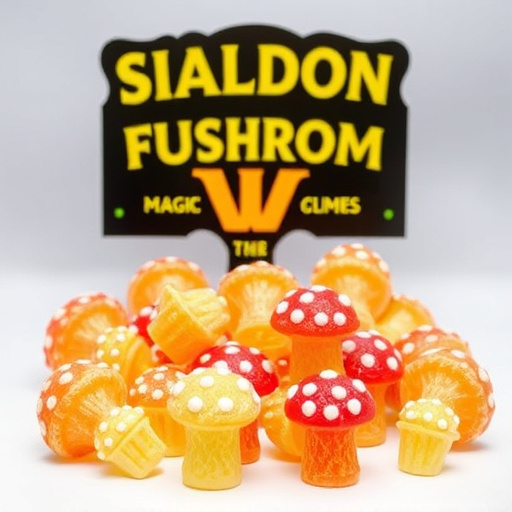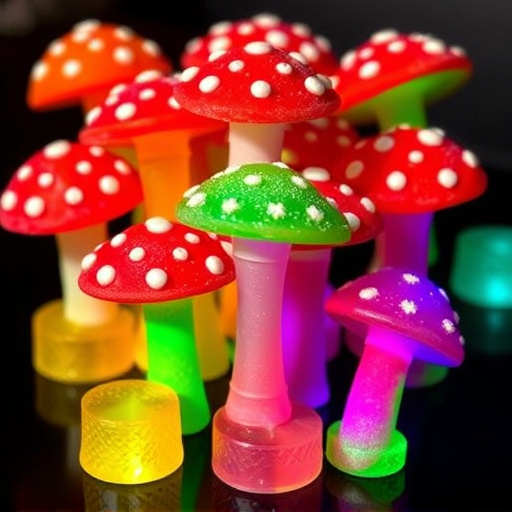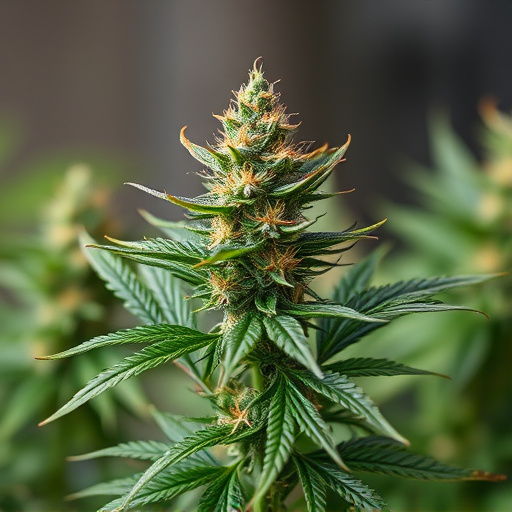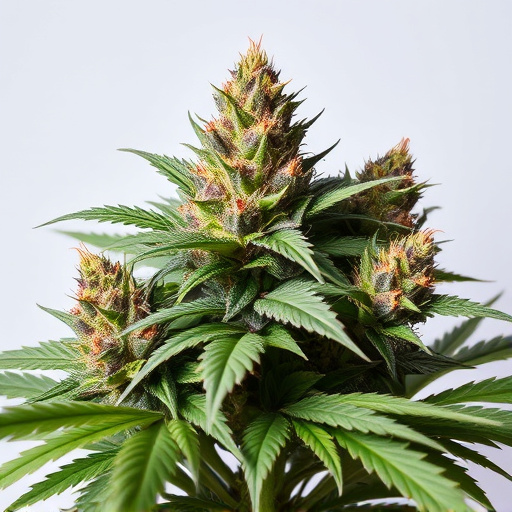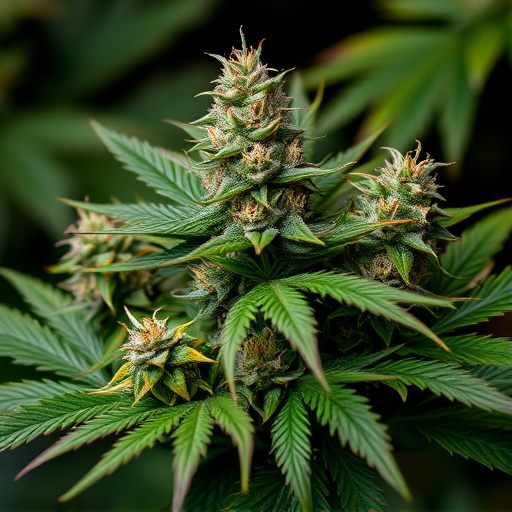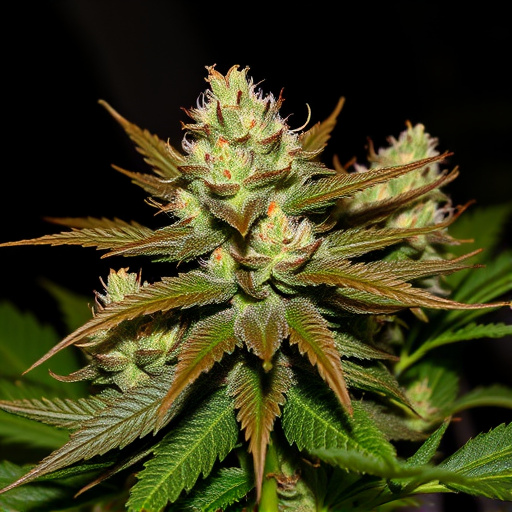The color change of cannabis flowers is a complex interplay between cannabinoids like THC and CBD, terpenes especially myrcene, temperature, light exposure, and genetics. Indica dominant strains, with their specific light requirements, reveal vibrant colors like purple and blue due to higher anthocyanin levels, setting them apart from sativa strains. This process offers cultivators the chance to breed unique color profiles and terpene combinations catering to diverse consumer preferences in the cannabis market.
Cannabis flowers’ captivating color transformation is a fascinating process, offering more than just aesthetic appeal. This phenomenon, driven by a complex interplay of cannabinoids and terpenes, is influenced by environmental cues and genetic predispositions. As cannabis enthusiasts explore the nuances of various strains, understanding why certain varieties, like indica dominant strains, exhibit distinct color changes becomes essential for appreciating their unique characteristics. Let’s delve into the science behind these vibrant shifts.
- The Role of Cannabinoids and Terpenes in Color Change
- Environmental Factors: Temperature and Light Exposure
- Genetic Differences Between Indica Dominant Strains
The Role of Cannabinoids and Terpenes in Color Change
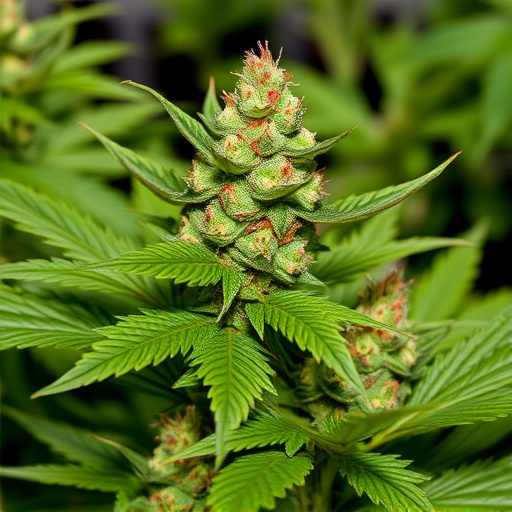
The color change of cannabis flowers is a fascinating process driven by the complex interplay of cannabinoids and terpenes. As cannabis plants approach maturity, the levels of these chemical compounds fluctuate, leading to the transformation of green buds into vibrant hues like purple, pink, or orange. Cannabinoids, particularly THC (tetrahydrocannabinol) and CBD (cannabidiol), play a significant role in this transition. During the late stages of floration, an increase in cannabinoid concentration signals to the plant that it’s time to switch from growth to reproductive mode, triggering a cascade of biochemical reactions.
Terpenes, aromatic compounds responsible for the distinct flavors and fragrances of cannabis strains, also contribute to the color shift. Many terpenes are known to interact with cannabinoids, influencing their effects on the plant’s physiology. For example, myrcene, a common terpene found in both indica dominant strains and some sativa varieties, has been linked to enhancing the purple pigmentation in cannabis flowers. This interaction between cannabinoids and terpenes not only adds aesthetic appeal to different cannabis varieties but also offers insights into the potential therapeutic benefits associated with specific color profiles.
Environmental Factors: Temperature and Light Exposure

The color change in cannabis flowers is a complex process influenced by various environmental factors. One significant aspect is temperature, which plays a crucial role in determining the final pigment of the buds. During the blooming stage, optimal temperatures around 70-85°F (21-29°C) promote healthy growth and development. Deviations from this range can impact the plant’s metabolism, affecting the production and accumulation of pigments responsible for colors like emerald green to reddish-brown hues.
Light exposure is another critical variable. Cannabis plants, especially indica dominant strains, have unique light requirements. These strains tend to reach maturity faster than their sativa counterparts and often develop denser buds with a shorter flowering period. Adequate light intensity and duration are essential for the synthesis of chlorophyll, which gives cannabis its initial green color. However, as flowers age, reduced light exposure can trigger the degradation of chlorophyll, revealing other pigments like carotenoids (yellow, orange) and anthocyanins (red, purple), contributing to the vibrant color changes we see in mature cannabis blossoms.
Genetic Differences Between Indica Dominant Strains
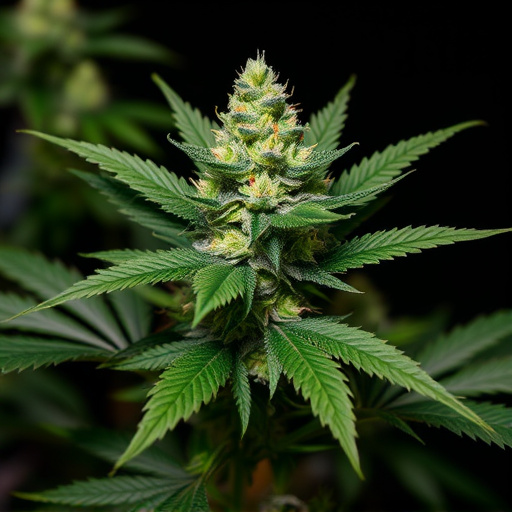
Cannabis flowers’ color transformation is a fascinating process influenced by various factors, and one key aspect lies in the genetic differences between indica dominant strains. These strains, known for their distinct physical characteristics, exhibit varying hues of purple, blue, or white as they mature. The genetic makeup determines the production of specific pigments that contribute to these colors. Unlike other plant species where color changes might be triggered by environmental cues, cannabis flowers’ pigmentation is primarily governed by their heritage.
Indica dominant strains, with their rich history in mountainous regions, often display deeper, more vibrant shades due to higher levels of anthocyanins, natural compounds responsible for blue and purple colors in plants. This genetic predisposition results in a visually striking contrast compared to sativa strains, which tend to have more neutral or lighter color palettes. Understanding these variations is essential for cultivators aiming to breed specific colors or achieve unique terpene profiles, catering to diverse consumer preferences.
Cannabis flower color change is a multifaceted process influenced by cannabinoids, terpenes, environmental conditions, and genetic factors, particularly in indica dominant strains. Understanding these elements helps us appreciate the diverse range of colors cannabis can display, from vibrant purples to rich browns. By recognizing how these components interact, cultivators can optimize growing conditions to produce flowers with desirable hues, enhancing both aesthetic appeal and potential therapeutic benefits.

